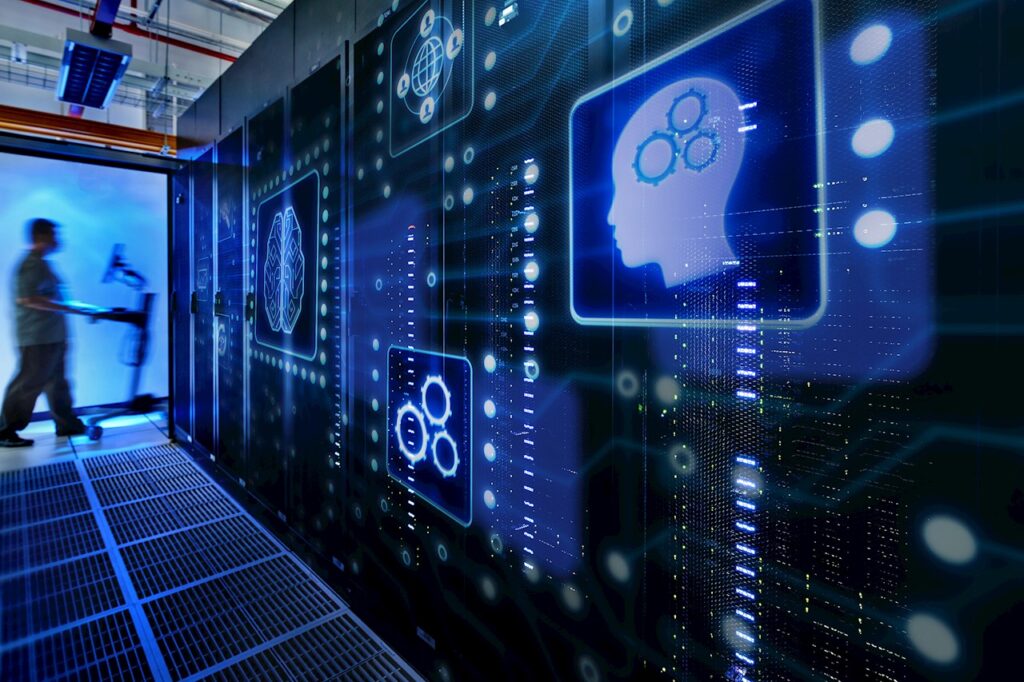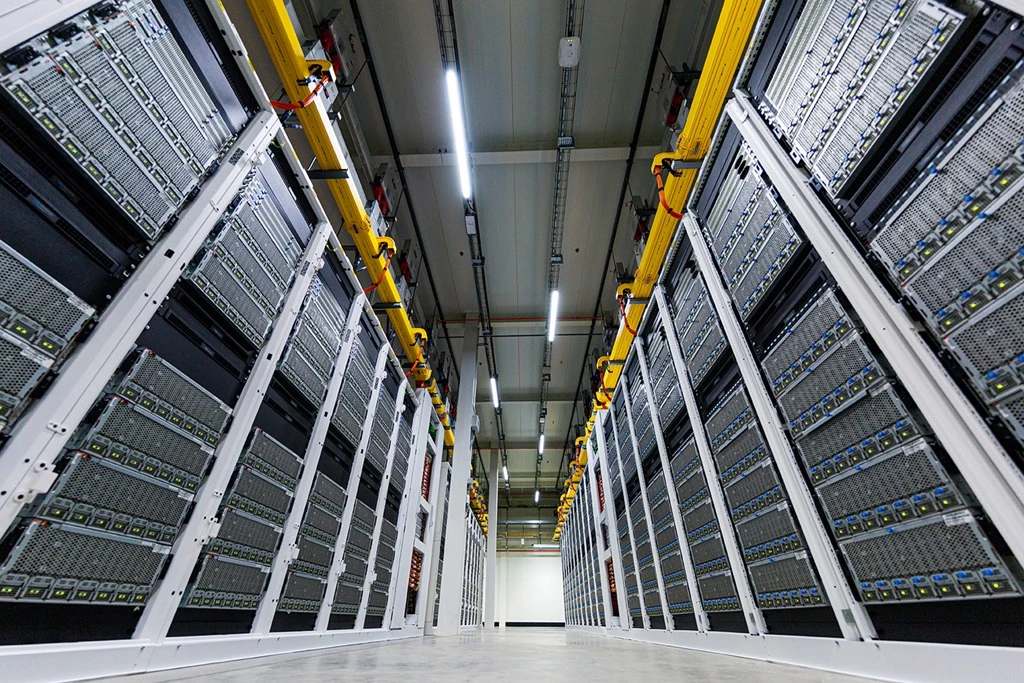With data-driven businesses and the use of the internet boom, the data center market has experienced exponential growth over the last decade, driven by advancements in technology, increased data consumption, and a growing demand for cloud-based services. As businesses become more reliant on digital infrastructure, understanding market size trends and forecasts is essential for stakeholders. In this article in Danacloud, we’ll analyze the Data Center Market Size evolution, its trajectory over the next decade, and its long-term outlook.
What Happened in the Last 2 Years?
The last two years have been transformative for the data center industry. Key factors of this huge change include:
- Surge in Data Consumption: The pandemic accelerated digital transformation, increasing the need for data centers to support remote work, streaming, and online education.
- Cloud Adoption Growth: Businesses increasingly shifted operations to cloud platforms, fueling demand for hyperscale data centers.
- Sustainability Focus: Companies began adopting greener data center practices, including renewable energy integration and energy-efficient cooling systems.
- Emerging Technologies: Edge computing, AI, and 5G networks created new opportunities for smaller, localized data centers.
The combination of these factors led to a heightened focus on scalability, efficiency, and regional expansion: exactly what we need in a world based on data-driven decision-making.
If you want to know about data center tiers come here.
Data Center Market Size Changes in the Last Decade
Over the past decade, the global data center market has grown substantially. Knowing the trends of this growth will help you better understand the changes and of course, select more efficient data centers for your own goals:
-
2014-2018:
- Market growth averaged 7% annually.
- Rise of colocation services and enterprise data centers.
- Early adoption of hybrid cloud models.
-
2019-2023:
- Hyperscale data centers, driven by tech giants like Amazon, Google, and Microsoft, surged.
- Global market value surpassed $200 billion by 2023.
- Increased emphasis on energy-efficient designs to reduce carbon footprints.
-
Regional Shifts:
- North America led the market, but APAC regions, particularly China and India, emerged as major players.
- Investments in underdeveloped regions introduced new growth opportunities.
The Prediction of Data Center Market Size (2024 to 2034)
The data center market outlook is projected to continue its upward trajectory. Here’s what’s expected:
-
2024-2028:
- Average annual growth rate of 10%.
- Significant investments in AI and machine learning capabilities.
- Expansion of edge data centers to support IoT and 5G devices.
- Hyperscale facilities are predicted to account for over 50% of market revenue.
- For example, cloud service providers are expected to drive hyperscale adoption further, integrating AI-driven platforms for seamless scalability. Similarly, edge data centers will expand to cater to autonomous vehicles and real-time analytics.
-
2029-2034:
- Market value is expected to exceed $500 billion by 2034.
- Widespread adoption of quantum computing and neuromorphic systems.
- Further regional diversification, with Africa and South America playing bigger roles.
- Data center automation and predictive maintenance are becoming industry standards.
Data Center Market Outlook in the Future
More and More businesses are focusing on environmental awareness and efficiency. The Changes are positive and aim towards a sustainable use of resources to keep data safe. The data center market outlook will be affected, too. Several transformative factors will shape the future of the data center market. Let’s read about them:
-
Energy Efficiency Innovations:
- Liquid cooling and renewable energy-powered centers will become the norm.
- Smart grids and AI-driven energy management systems will optimize consumption.
-
AI and Automation:
- Increased use of AI for workload optimization, predictive maintenance, and real-time analytics.
- Robotics may be introduced for equipment handling and monitoring.
-
Decentralization:
- Growth in edge and micro data centers to support localized processing needs.
- Decentralized data models for enhanced latency reduction and resilience.
-
Regulatory Pressures:
- Governments may introduce stricter regulations on data privacy and carbon emissions.
- Certifications and standards like ISO 50001 will gain prominence.
Read more: Data Center Electromagnetic Waves
What Role Does AI Play in Data Center Market Size and Outlook?
“Everything is being revolutionalized by AI”! Artificial Intelligence (AI) significantly influences the data center market by optimizing operations, enabling advanced analytics, and reducing costs. AI-driven systems improve efficiency through predictive maintenance, minimizing downtime and repair expenses. Machine learning algorithms enhance workload management, dynamically adjusting resource allocation to meet demand fluctuations. Furthermore, AI enables the deployment of smart cooling systems, reducing energy consumption and contributing to sustainability goals.
Here are four data centers that have already started utilizing AI in their functionality:
-
Google Data Centers
Google uses AI to optimize energy usage, automatically adjusting cooling systems based on real-time data to reduce energy consumption. AI-driven predictive maintenance detects potential hardware failures early, improving reliability and minimizing downtime. Additionally, AI helps manage workloads efficiently by predicting traffic patterns and allocating resources dynamically.
-
Microsoft Azure Data Centers
AI enhances operational efficiency by managing cooling and power systems in Microsoft’s Azure data centers. AI-driven analytics enable automated capacity management, adjusting resources based on traffic demands. The system monitors hardware health, diagnosing faults, and scheduling repairs, which reduces human intervention and speeds up issue resolution.
-
Amazon Web Services (AWS) Data Centers
AWS leverages AI to manage infrastructure more effectively. AI algorithms predict hardware failures, enabling preemptive maintenance to reduce downtime. In addition, AI-driven systems optimize energy use by analyzing environmental conditions and adjusting cooling mechanisms accordingly. AI is also used to dynamically allocate computing resources based on workload demands.
Read more: What is a Colocation Data Center?
-
Equinix Data Centers
Equinix integrates AI for optimizing network performance and reducing energy consumption. AI is used for predictive modeling, ensuring that cooling systems and energy resources are utilized efficiently. Additionally, AI algorithms help improve security by analyzing network traffic patterns and identifying potential threats, thus strengthening overall data center operations and security protocols.
Final Thoughts
The data center market outlook is poised for remarkable growth over the next decade. By adapting to technological advancements, sustainability demands, and global shifts, businesses can harness the full potential of this evolving industry. Whether it’s through hyperscale facilities or localized edge solutions, the focus remains on efficiency, scalability, and innovation. Staying ahead requires continuous investment in advanced infrastructure and strategic planning to meet both current and future demands.
Read more: What is an enterprise data center?
FAQ
-
What factors drive the growth of the data center market?
Growth is driven by cloud adoption, AI technologies, IoT expansion, and increasing data consumption. Sustainability initiatives and regional investments also contribute significantly.
-
Which regions will see the highest data center growth?
APAC, Africa, and South America are expected to experience significant growth due to increased investments and infrastructure development.
-
How does edge computing impact the data center market?
Edge computing drives demand for smaller, localized centers, complementing larger facilities by improving latency and enabling IoT functionality.
-
What role does sustainability play in data center development?
Sustainability is crucial, with companies adopting green technologies like renewable energy, efficient cooling, and carbon-neutral designs to meet environmental goals.



